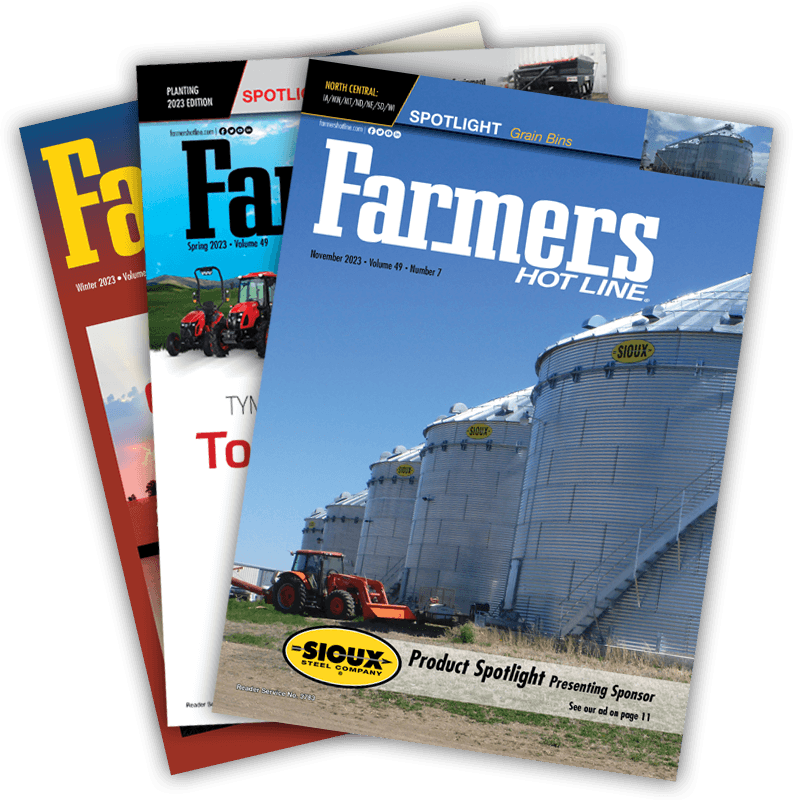Stack Smarter, Not Harder
Choosing the Right Bale Accumulator for Your Operation
Choosing a bale accumulator isn’t just about picking the first machine that promises faster stacking. While it may seem like “a bale’s a bale,” the right equipment depends on key factors like yield, terrain and the type of baler in use. The wrong choice can lead to unnecessary downtime, labor inefficiencies and added frustration.
Understanding the differences between accumulator types can help determine which model best fits a particular operation — whether managing a small family farm or handling hundreds of acres. This guide outlines the key considerations and common mistakes to help make a more informed, cost-effective decision.
Mechanical vs. Hydraulic: What’s the Difference?
Understanding the difference between mechanical and hydraulic bale accumulators is key when selecting the right model. While cost is an important factor, it’s only part of the equation.
Mechanical accumulators rely on gravity, moving parts and mechanical linkages to arrange bales into patterns. They don’t need hydraulic power from your tractor and they’re simpler to maintain — fewer hoses, no hydraulic leaks and generally fewer things to break down in the middle of baling season. But they’re not always as flexible in how they arrange bales, and they can be slower if you’re moving a lot of material.
Hydraulic accumulators use hydraulic power to position and stack the bales into whatever configuration you need. These shine if you’re working with odd-shaped fields, steeper ground or trying to stack bales a certain way for transport. They tend to cost more upfront, but they can pay for themselves if they reduce your labor and equipment wear over time.
When comparing the two, take into consideration how much help you will have during baling season. If the answer is that it’s (mostly) a solo or small crew operation, hydraulic might be the ticket because it cuts down the number of hands you need out in the field. But if you’ve got reliable help and a flatter field, a mechanical model can work great and save you money.
Think About Your Terrain and Yield
Something to think about before you’re in the middle of a harvest: terrain matters. If your fields are hilly or uneven, a mechanical accumulator might struggle to work consistently. Gravity isn’t always your friend on a slope. Bales can slide off or end up in odd spots, making pickup harder later.
On high-yield fields where bales are produced quickly, it’s important to choose an accumulator capable of keeping up with the output. Undersized or mismatched equipment can lead to frequent jams and downtime, turning an efficient harvest into a drawn-out process.
When evaluating options, consider the following general guidelines:
- Flat fields with moderate yields: Mechanical accumulators typically perform well.
- Hilly terrain, heavy yields or tight harvest windows: Hydraulic accumulators offer better handling and can manage higher output without delays.
Matching equipment capacity with field demands helps avoid interruptions and maximizes productivity during baling.
Don’t Pair the Wrong Accumulator With Your Baler
Keep in mind that not all accumulators play well with every baler. If you mismatch them, you risk damaging both the hay and the equipment. If you’re shopping online, this is paramount.
Some key things to double-check:
- Bale size compatibility:/] Make sure the accumulator is designed for the bale size your baler produces, whether that’s small squares, mid-sizes or large squares.
- Your accumulator needs to handle bales at the speed your baler spits them out. If the accumulator lags, you’ll end up stopping the baler more often or watching bales pile up where they shouldn’t.
- Sounds simple, but rigging up adapters or fabrications can be difficult because the accumulator wasn’t built to match the baler’s hitch or hydraulic hookups.
The ROI of Labor Savings
It’s easy to focus on the sticker price, but long-term labor and time savings are key factors when evaluating the value of a bale accumulator. Manual bale handling requires significant labor hours, and those wages can add up quickly. Additional fuel costs for extra trips with tractors or loaders also impact overall expenses.
For example, operations that previously required a crew of three to walk and load 200 bales over six hours have been able to reduce that to about three hours with just one additional worker when using a hydraulic accumulator. Over multiple seasons, that kind of savings adds up – not only in time, but also in reduced labor strain and improved scheduling flexibility during tight harvest windows.
Watch for Dealer Support and Parts
Beyond the machine itself, parts and service availability should play a role in the decision-making process. Some brands are backed by strong dealer networks, while others may lack local support. During peak harvest, waiting days for a replacement part can mean delayed baling and potential crop loss due to weather.
Lower-cost equipment may offer upfront savings, but if replacement parts are hard to source or take too long to arrive, those savings can quickly be erased. Local dealer support can make a critical difference when quick service is needed.
Final Considerations
Choosing the right bale accumulator depends on understanding the specific needs of the operation — field terrain, crew size, baler compatibility and labor availability. What works well for a flat, 40-acre hayfield may not be suited for rolling hills or high-output balers.
While it can be tempting to select a machine based solely on price, investing in a well-matched, efficient accumulator can reduce downtime, improve productivity and extend the life of both baler and operator resources. Taking the time to research, ask detailed questions and compare options based on actual operational needs helps ensure a more efficient and cost-effective baling process.


